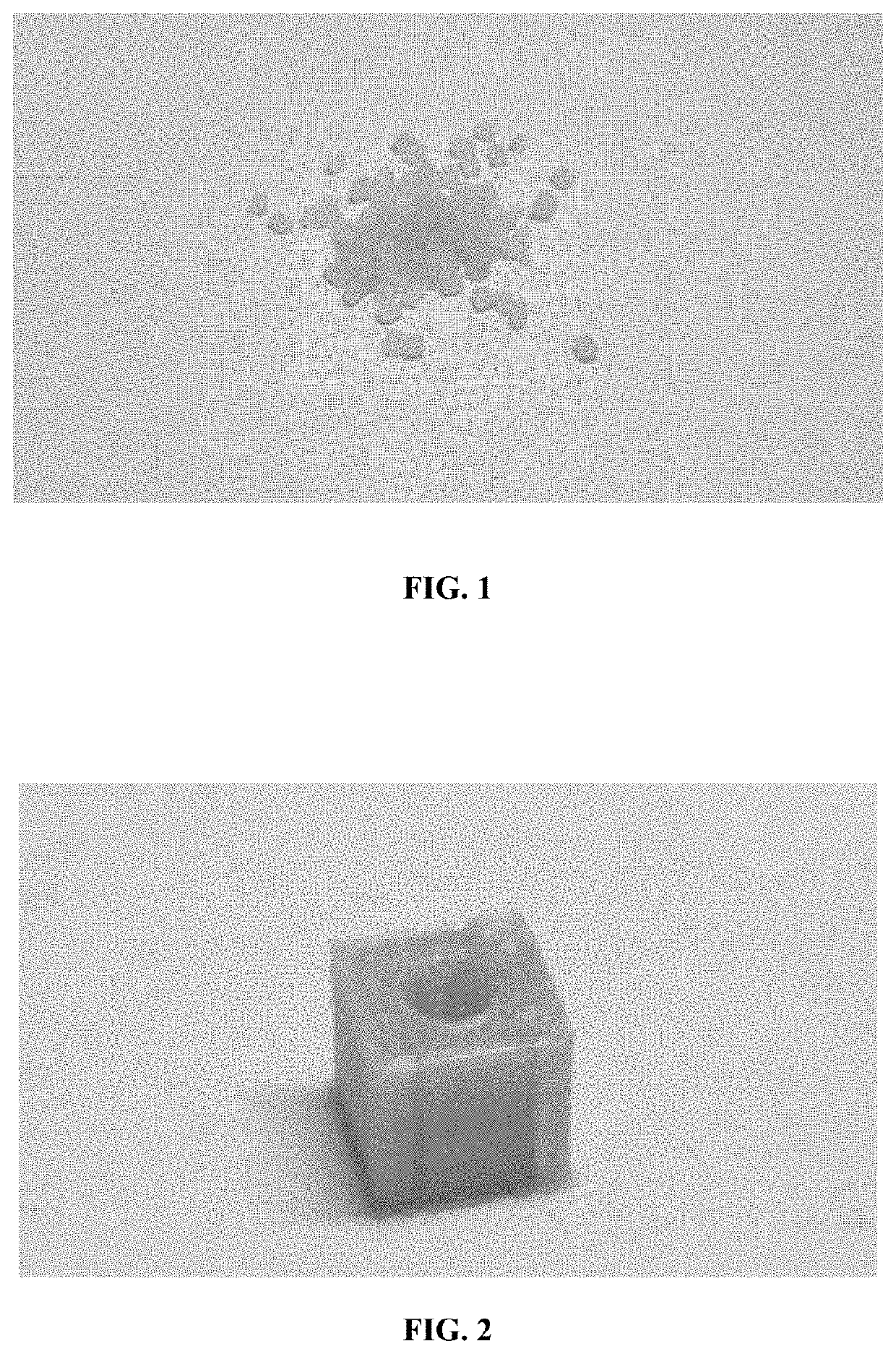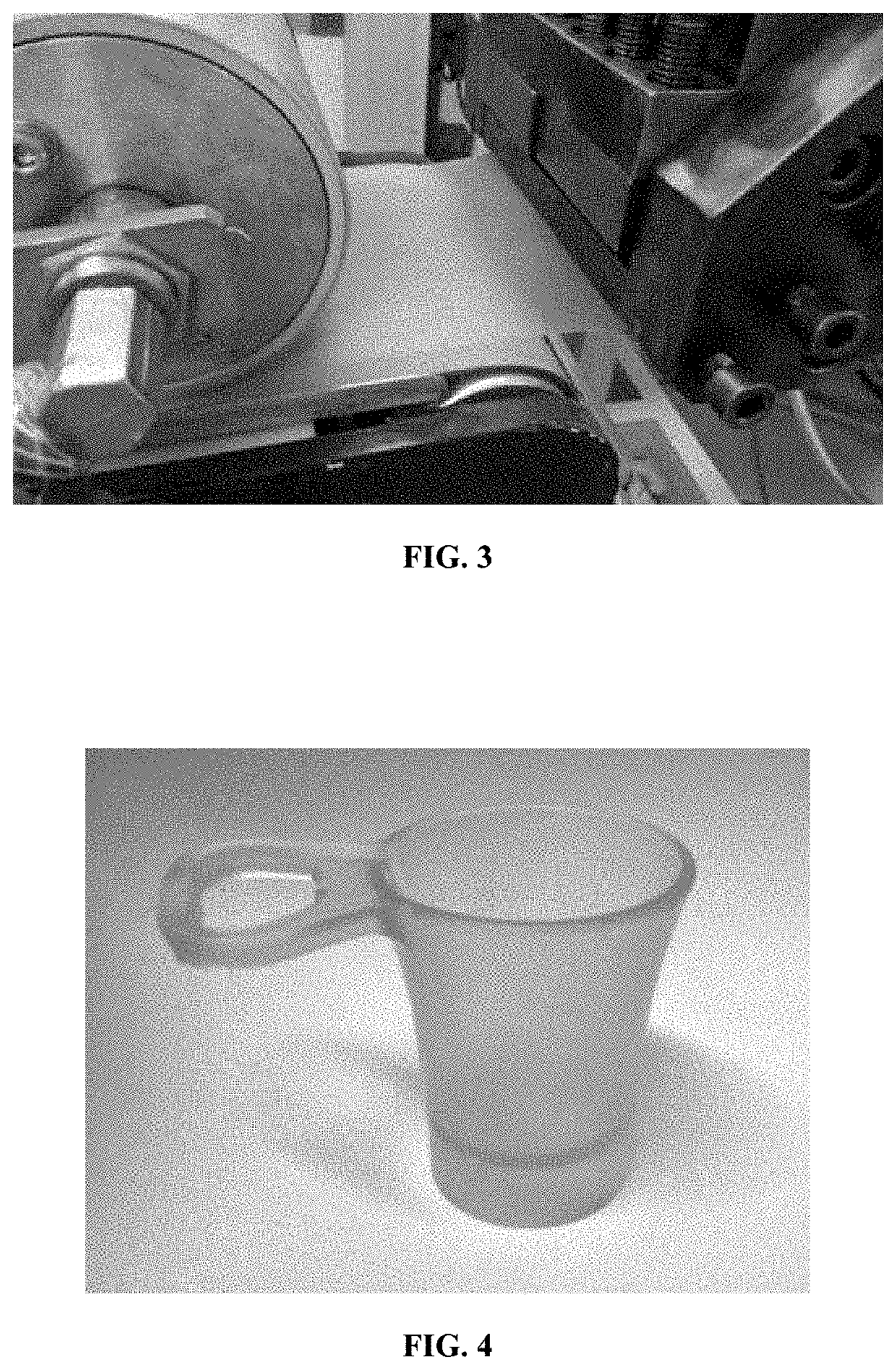Use of molar mass controlled cellulose
a technology of molar mass controlled cellulose and cellulose fiber, which is applied in the direction of additive manufacturing, manufacturing tools, coatings, etc., can solve the problems of difficult access for solvents and reagents to the areas within the cellulose fibre, poor network reaction rate, and large excess of chemicals, and achieve excellent thermoplastic properties
- Summary
- Abstract
- Description
- Claims
- Application Information
AI Technical Summary
Benefits of technology
Problems solved by technology
Method used
Image
Examples
example 1
of Molar Mass Controlled Cellulose
Ozone Treatment
[0052]Z-stage was performed in a plastic flow through-reactor in medium consistency. Pulp was added into the reactor, and water was charged and the pulp was mixed when the water addition was done. Initial pH was adjusted with H2SO4 and oxygen flow through the reactor was started.
[0053]After 10 minutes ozone generator was started (160 A). Ozone generation (about 192 mg / min) in the carrier oxygen gas was first stabilized for 5 minutes. After stabilization ozone flow was lead to the potassium iodide solution (10 min), and after that gas flow was lead into the reactor. Pulp was mixed all the time during the ozone charging. Mixing was started already one minute before the charging and continued for one minute after the charging was finished. Ozone flow was lead again into potassium iodide solution (10 min), and pulp was rinsed with oxygen flow 10 minutes after the reaction time. Ozone formation was determined from potassium iodide solution...
example 2
s of the Molar Mass Controlled Cellulose
[0060]Mechanical properties were tested according to table 1, which also shows corresponding values for typical reference materials.
TABLE 1Mechanical propertiesMMCCMMCCpilot 1 +Ref.Ref.Ref.Ref.Testspilot 110% fiberPLAHDPELDPECATensile strength (MPa)11950-5520-40 8-1230-40Young's modulus (MPa)2323283500 200-1000200-4001600Elongation at break (%)128 5-100>100>1002-5Impact Strength (kJ / m2)6.873-7 2-12No breakHDT 1.80 MPa (° C.)333340-456035-3748-60MFI (g / 10 min)3.22-54-81-4Density (g / cm3)~1~1~1.2~1~0.9~1.3Melting temperature130-150120-170120-190120-160210(° C.)
[0061]Thermal properties of samples were analyzed by differential scanning calorimetry (DSC) (table 2). Because the long chain cellulose esters are amorphous, primary cellulose melting cannot be observed. In case of cellulose palmitate, the detected melting is due to melting of the side-chains (FIG. 5). The side-chain melting can take place when cellulose ester substituent length is C10 or ...
PUM
| Property | Measurement | Unit |
|---|---|---|
| Temperature | aaaaa | aaaaa |
| Fraction | aaaaa | aaaaa |
| Angle | aaaaa | aaaaa |
Abstract
Description
Claims
Application Information
 Login to View More
Login to View More - R&D
- Intellectual Property
- Life Sciences
- Materials
- Tech Scout
- Unparalleled Data Quality
- Higher Quality Content
- 60% Fewer Hallucinations
Browse by: Latest US Patents, China's latest patents, Technical Efficacy Thesaurus, Application Domain, Technology Topic, Popular Technical Reports.
© 2025 PatSnap. All rights reserved.Legal|Privacy policy|Modern Slavery Act Transparency Statement|Sitemap|About US| Contact US: help@patsnap.com


